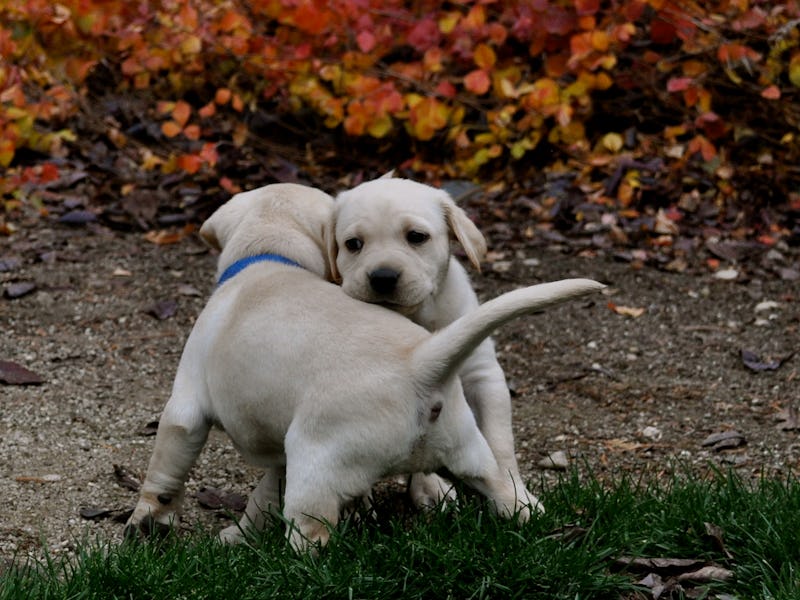How to Learn to Love Your Partner Again Using Puppy Indoctrination

If your feelings about a relationship are plagued with negativity or ambivalence, you might be able to condition yourself back into positivity with images of puppies.
A new study published in the journal Psychological Science tested whether a married couple’s relationship satisfaction could be influenced by “evaluative conditioning,” which encourages a person to like or dislike something by making them associate it with positive or negative stimuli. When study participants looked at photos of their partners next to positive images and words — including baby animals — they felt more satisfied with their marriages.
Researchers used 144 couples at an average age of 28 years old, all of whom had been married for under five years. Every three days for six weeks, each spouse looked at a series of images in which their partner sporadically appeared. A control group saw their partner’s face with neutral stimuli, like a picture of a button, whereas the experimental group saw them with positive stimuli, like the word “wonderful” or pictures of bunnies and puppies.
Simultaneously, the study measured participants’ attitudes toward their spouses by testing their reaction to an image of their partner’s face among a stream of other faces. As time went on, those in the experimental group grew to have a more positive reaction to their partner’s face and also reported more marital satisfaction.
D'awww. (Love your partner.)
The research, which was funded by the United States Department of Defense, was designed with married soldiers in mind, to find ways to help them manage deployment and separation. If the project receives further funding, the team hopes to turn this data into a procedure that these couples can use.
That procedure doesn’t exist yet, but you can still try adopting this experiment for your relationship. Inverse spoke to the lead researcher, James K. McNulty, with a few follow-up questions.
For starters, does it matter that you’ll be aware of how the conditioning is supposed to work? McNulty isn’t sure — it’s a question he hopes to address in the next phase of research — but he thinks that it likely won’t make a difference. “We imagine that most people are not motivated to avoid the associations we are trying to strengthen. Thus, being aware should not matter too much.”
If you’re creating the image series yourself, you’d likely want to tailor the content to your personal taste. You could include an image of the things that make you most happy (even a photo of you with your partner in a pleasant moment) or things that turn you on, if you’re trying to increase sexual desire.
McNulty says his team has “thought about this,” but needs to do more research to analyze how individualizing the images would change the results. “It depends on how much people are elaborating on the associations,” he tells Inverse.
It may be surprising that something as strong and complicated as our feelings about a relationship can be influenced by photos of puppies. The researchers emphasize that this isn’t the primary determinant of marital happiness: the main factor is the interactions between spouses.
Still, behavior doesn’t explain the entire satisfaction equation. The study’s press release notes that spouses often become less happy in their relationship “even when day-to-day behaviors stay the same.”
Try puppies, Mick.
So if you aren’t as happy in your relationship as you’d like to be, it may not be because you or your partner is doing anything wrong. It may just be that you need the help of some adorable baby animal pictures. Conditioning people back together may seem a bit Orwellian, but it’s also just the science of love.